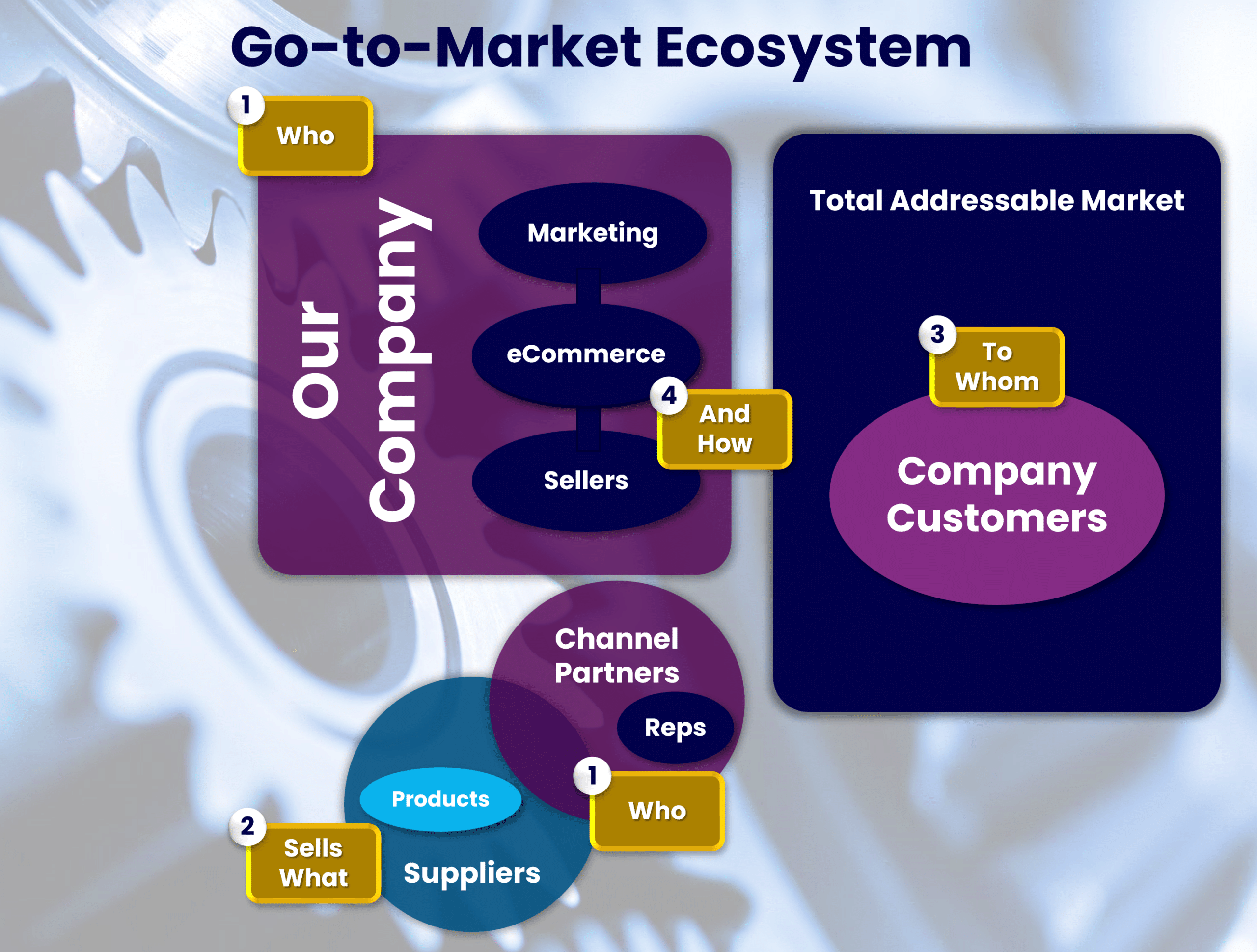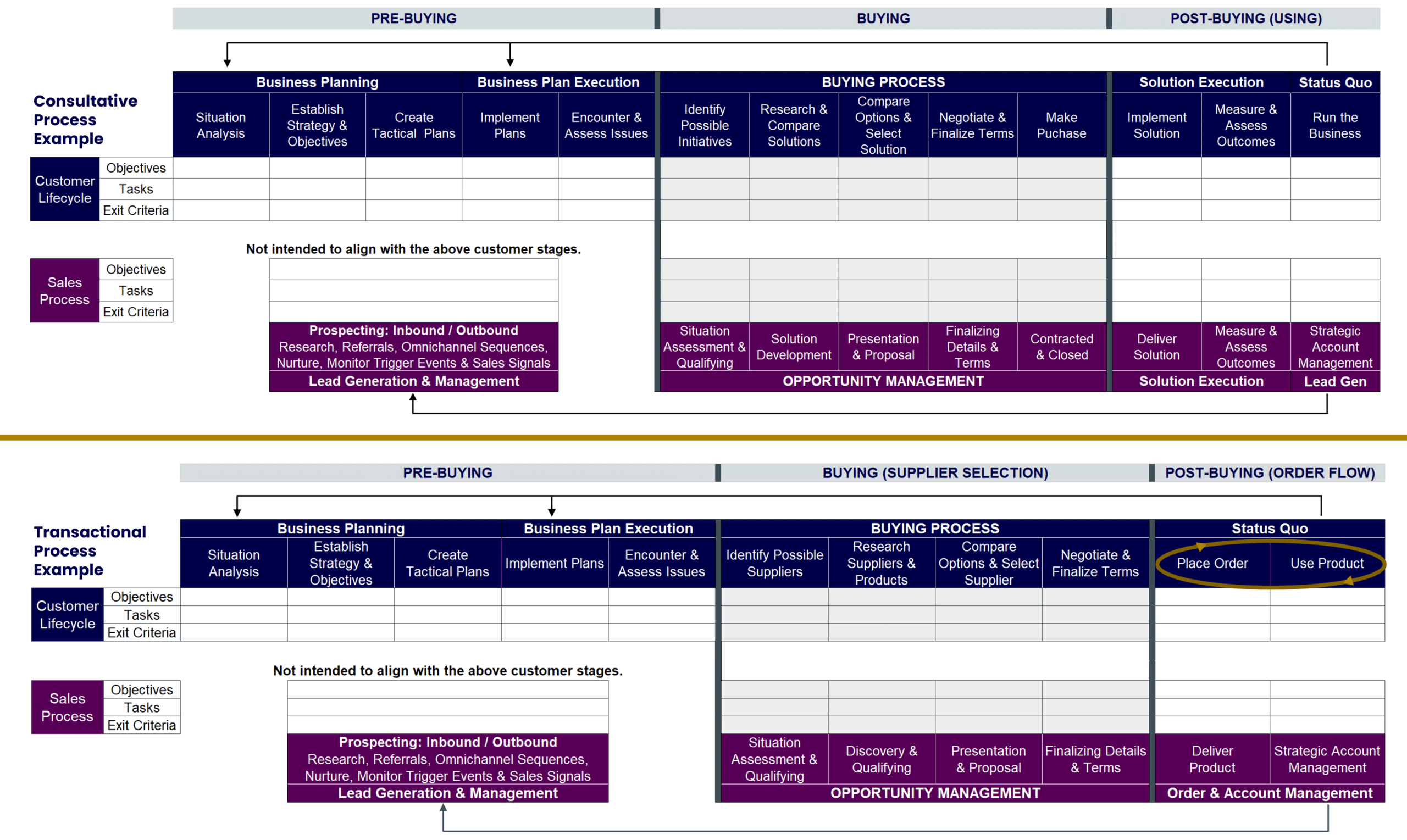Allow me to offer some context for what I’m about to say:
I spent many years working directly for employers as a front-line practitioner or department leader, responsible for supporting the sales force and improving results. In 2000, I did freelance consulting for a few years, but missed being part of an aligned team and returned inside for an exciting opportunity to build a sales performance team from the ground up.
In 2012, I joined the vendor side and did one more flip-flop afterward to the inside in 2014. From 2017 forward, it’s either been self-employed consulting or client-facing work on the vendor side.
If you’re still awake and with me, I share this for a reason. From working on both sides of the fence (internal practitioner and external consultant/vendor) and having experience as both a corporate buyer and a B2B seller and sales manager, I learned some things I did not expect:
Get smart quick: As a consultant, you need to “get smart quick” about your clients’ situations, sometimes in a vertical industry in which you don’t have personal experience. You can’t do this well without having a great plan for discovery, to capture what you need to assess the situation and make impactful recommendations. This was the impetus for both Who Sells What To Whom and How, and my Situation Assessment Framework.
Know how the gears turn: Many employees, including some managers and leaders, have little idea how their business operates (or makes money), outside of their own silo.
Don’t assume: Assumptions abound on both sides of this fence, internal and external. People tend to assume, extrapolate, view things through their lens of cognitive biases or accept surface-level answers, rather than peel the onion, clarify, confirm or ask what they fear will be perceived as “stupid questions.”
Don’t rely on momentum: Many companies run on what I call “Momentum Fuel.” It’s especially true in very mature vertical industries, particularly those with some level of transactional sales for replenishable products (but may also apply to bespoke or engineered products and the complex sale). And yes, I do see this in wholesale distribution, specifically. Many companies started in a different era, acquired a significant customer base, developed and maintained deep relationships and grew as their customers grew. Much like Newton’s first law of motion, “… a body in motion tends to stay in motion, unless acted on by an external force,” this momentum keeps them rolling. This works until it doesn’t (based on changes in external forces, like buyer behavior, or a shift in generations).
Avoid oversimplification risk: The quote, “Everything should be made as simple as possible, but not simpler,” is wise advice. I truly understand the desire for simplifying, but oversimplifying complex issues or solutions often produces results equally as poor as overcomplicating things.
Avoid innovation risk: Rather than innovate, many leaders prefer incremental approaches to change. It’s more comfortable and feels less risky, until not changing significantly becomes even riskier. While I don’t completely agree with The Henry Ford quote, “If I had asked people what they wanted, they would have said faster horses,” it sometimes rings true about how we evolve our own businesses (or don’t).
Note: For the record, I’m a huge fan of market research, customer advisory boards, voice-of-the-customer work, net-promoter scores, win-loss analysis and similar customer engagement and feedback strategies. Just keep in mind that very often, both you and your customers will have cognitive biases and may be boxed in by your current realities. This doesn’t mean you shouldn’t do the above things and strive for customer intimacy.
Master systems thinking and process management: In many companies, business process management (BPM) is not as systemic (in terms of system thinking) or cross-functional as it should be. Without this, there is little opportunity to align, address constraints, remove friction or improve results.

One of the things that grew out of these lessons, was the “who sells what to whom and how” mantra (WSWTWAH or wis-wit-wah). It helped me “get smart quick,” tested reality on how well my clients grasped their own situation, radically reduced assumptions/risks (mine and theirs), fostered alignment on the current state (and eventually, the desired future state), created a common language for discussions and gave me insight into how they viewed the market/customers, products, sellers, business processes and especially sales, buying and customer experiences.
Pretty powerful for such a simple sentence, right?
This explains why I recommend this mantra for you, to both explore your (and your employee’s) view of your business, as well as extending this thinking to how you view your customer’s businesses, and your channel partners and suppliers.
I refer to this as your Go-To-Market Ecosystem. Understanding how all the gears turn, is a smart foundation.

Disclaimer: I’ve already broken my “don’t oversimplify” rule with this graphic. I’ll ask forgiveness since we’re talking at the 30,000-foot level in a blog post, not diagnosing your company.
Who Sells What to Whom and How (WSWTWAH)?
So, let’s get to it. Supply chain management, inventory management, operations and fulfillment are all critical aspects of managing a profitable distribution company, especially now. For this exercise, however, we’re going to focus on go-to-market against the customer lifecycle. Start from the beginning of the customer lifecycle and move from left to right.
Two Examples of a Customer Lifecycle

With this context, answering the remaining questions in our key mantra, is very context-dependent and business-specific.
For the below, I’ll position from the standpoint of using WSWTWAH internally, because that’s the more complex, detailed version. Keep in mind that you can do this at a higher level for external stakeholders like prospects, customers, suppliers and channel partners to better understand their businesses, quickly.
Who Sells …
For your company, consider all avenues into your company or opportunity pipeline that produce a sale. Think in terms of business process management. You don’t need to document the processes here, just who is doing the work. It might be people, roles or functions/departments. We’ll return to this in the And How step below.
It’s very likely that you will need to consider separate workstreams, and each is likely to have separate swimlanes and processes. How do you create interest and generate leads for new business acquisition at first, and then for account growth and expansion?
Consider:
- Content marketing/website
- SEO
- SEM
- Events
- Inbound call management (upsell/cross-sell on inquiries)
- Outbound sales (inside/outside/hybrid) for new business development, account management (inside/outside/hybrid), and any other way you find or generate leads.
Who takes part in each of these activities? Those people, roles, and functions/departments are your Who.
What…
This is simply what you sell – your products and services or solutions. As with the above Who work, you may have different “Who streams” for certain products, or for your transactional or consultative processes.
To Whom …
Who are your prospective buyers and your customers? Who makes and influences the decision to buy from you or continue to do business with you? For your company, you should do buyer persona research and document this. Buyer Acumen truly is the foundation of any GTM strategy and tactical plans.
And How?
Here, we return to the processes and workstreams you identified or clarified in your Who step. Scroll up and look at the two examples of the Customer Lifecycle, above. For your sellers, you’ll be documenting the stages, objectives, tasks and exit criteria for the workstreams they participate in, across the lifecycles.
Remember that the chart above is simply an example and may not reflect your reality. Your sales process should support the customer lifecycle, especially during their buying process.
Next Steps
This work, done internally, can be intensely clarifying. It’s equally important, as mentioned, that you do this in a less-detailed way (but at least accurate and reflective of reality) with your buyers, customers, suppliers and channels.
When you understand who sells what to whom and how, from these multiple angles, you can foster alignment, communicate more effectively, identify and address constraints, strengthen relationships, reduce friction, improve the sales and customer experience, and pave the way to grow your business.
That’s it for this post. If this helps you in any way on your journey toward improved sales effectiveness, feel free to let me know. I’d enjoy hearing about your successes.
Mike Kunkle is an internationally recognized expert on sales enablement, sales effectiveness, sales training, sales coaching, sales management, and sales transformations.
He’s spent over 30 years helping companies drive dramatic revenue growth through best-in-class enablement strategies and proven effective sales systems.
Mike is the founder of Transforming Sales Results, LLC where he designs sales training, delivers workshops, and helps clients improve sales results through a variety of sales effectiveness practices and advisory services.
He collaborated to develop SPARXiQ’s Modern Sales Foundations™ curriculum and authored their Sales Coaching Excellence™ and Sales Management Foundations™ courses.
Mike's book, The Building Blocks of Sales Enablement, is available on Amazon, with others coming soon in 2026, starting with The CoNavigator Method for B2B Selling.

